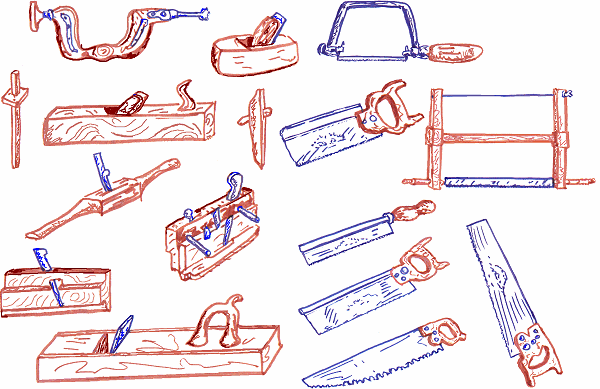

| The principal person who built houses up to the 1600s was the carpenter. He created a timber framed house from oak. Around them went wattle and daub or weatherboarding by oak and elm.The planning was in the yard where the wood was stored. The chosen timber was marked in Roman numerals for construction. |
| Machine nails and softwood use reduced the role of the carpenter. He specialised in floors, window frames and door frames. But he continued specialising in coffins. This meant some became undertakers whilst others became wheelwrights or horse drawn coach makers. There were fewer carpenters then by 1860. As factories became more involved and metal items replaced wooden, the range of tools used by the carpenter reduced, and especially the carpenter's hand made tools that were less wearing than machine made tools. |
| Smedley, N. (1977), East Anglian Crafts, London: B. T. Batsford, some images drawn from originals at 18, text at 17-21. |